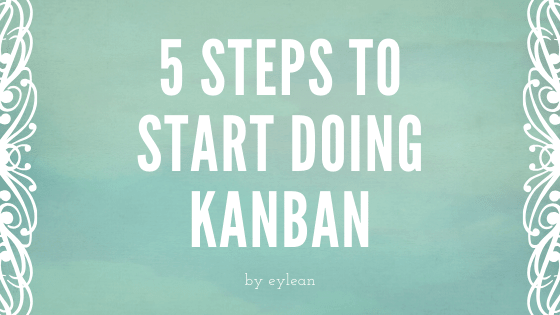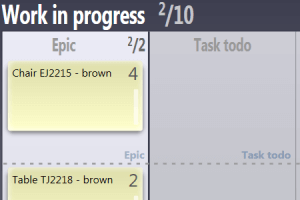Starting to implement Kanban can seem a little intimidating at first, especially if you have no previous experience with it. However, it would help if you remembered that Kanban is all about constant improvement and change; therefore all you have to do is take the first few steps, and soon you will be well on your way.
The methodology does not provide us with a fool-proof way to start.
However, it does give us the three main principles to follow through the whole process:
- Visualize your workflow.
- Limit the things you work on.
- Optimize your cycle time.
From the three principles above, we can draw five steps to take when starting with Kanban. The first step is to get to know and understand the current processes of the company. That is the whole process from the customer’s initial request to the final product or service. You need to know what type of tasks are carried out, what steps they need to go through, who assigns responsibility, etc. This is very important in order to understand what is happening in your company. And how it can be improved in the future.
The second step is building your Kanban board. Once you understand the processes of the company, you should start visualizing them on the Kanban board. Start simple – take a standard three-column (to do, doing and done) Kanban board and fill it up with tasks. Soon you will see what columns should be added and what columns are not necessary, also how you want to separate different projects or teams. Your Kanban board will be and should be changing quite a lot at the beginning, and once you have been using it for a while will become more constant.
After building your board, you will come to the third step – adding WIP (work in progress) limits. The WIP limit is a number assigned for the WIP columns (doing, testing, implementing, etc.) that states how many tasks can be in the column. No additional duties can be added if the column is full. WIP limits are a significant part of Kanban methodology because they help to ensure that the team is being productive. With the limited amount of tasks in the column, a team member has to finish a job before they can start another. There is no fool-proof way to define what WIP limits will work best for your team. However, it would help if you were not afraid to use best practices of other groups and adapt them to your needs as you go along.
After setting up the first board, comes monitoring and optimizing of the process.
That is where we come to the fourth step – setting up meetings. The short daily sessions can become one of your most significant assets in identifying problems and finding solutions. What you have to remember is that their goal is not discussing what tasks you have done and what jobs you will do in the future. The purpose of a daily meeting is to discuss the problems your team is having and trying to solve them. Planning and retrospective meetings should be held only when necessary and dedicated to discussing upcoming and past projects.
The fifth and final step to take when starting Kanban is setting up reports, such as lead and cycle time reports and cumulative workflow diagram. Reports help you see the information. Such as how many days it takes to complete a task. How many tasks the team is working on at a time. And how that is changing through the course of the project. You should follow the reports daily and review them with your team during the daily meetings. The reports and feedback from the team will give you great insight into how your process can be improved.
These are the five necessary steps to start doing Kanban, now all you have to do is to keep up with the meetings, update your board, monitor and continuously improve your process.








